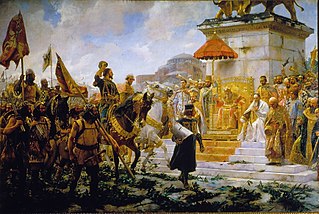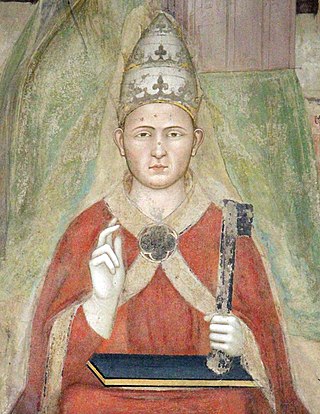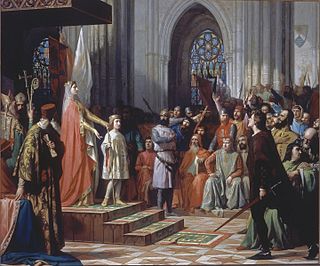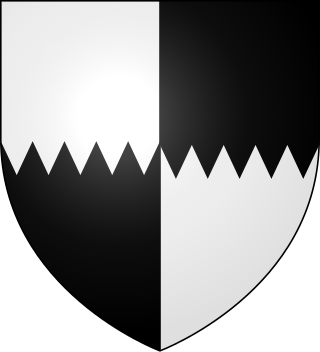
Year 1299 (MCCXCIX) was a common year starting on Thursday of the Julian calendar.
The 1300s was a decade of the Julian Calendar that began on 1 January 1300 and ended on 31 December 1309.

The year 1300 (MCCC) was a leap year starting on Friday in the Julian calendar, the 1300th year of the Common Era (CE) and Anno Domini (AD) designations, the 300th year of the 2nd millennium, the 100th and last year of the 13th century, and the 1st year of the 1300s. The year 1300 was not a leap year in the Proleptic Gregorian calendar.
The 1290s was a decade of the Julian Calendar which began on January 1, 1290, and ended on December 31, 1299.

Year 1303 (MCCCIII) was a common year starting on Tuesday of the Julian calendar.

Year 1304 (MCCCIV) was a leap year starting on Wednesday of the Julian calendar.

Year 1305 (MCCCV) was a common year starting on Friday of the Julian calendar.

Year 1298 (MCCXCVIII) was a common year starting on Wednesday of the Julian calendar.

Year 1295 (MCCXCV) was a common year starting on Saturday of the Julian calendar.

Year 1292 (MCCXCII) was a leap year starting on Tuesday of the Julian calendar.

Year 1291 (MCCXCI) was a common year starting on Monday of the Julian calendar.

The Wars of Scottish Independence were a series of military campaigns fought between the Kingdom of Scotland and the Kingdom of England in the late 13th and 14th centuries.

The Battle of Stirling Bridge was fought during the First War of Scottish Independence. On 11 September 1297, the forces of Andrew Moray and William Wallace defeated the combined English forces of John de Warenne, 6th Earl of Surrey, and Hugh de Cressingham near Stirling, on the River Forth.

John Balliol or John de Balliol, known derisively as Toom Tabard, was King of Scots from 1292 to 1296. Little is known of his early life. After the death of Margaret, Maid of Norway, Scotland entered an interregnum during which several competitors for the Crown of Scotland put forward claims. Balliol was chosen from among them as the new King of Scotland by a group of selected noblemen headed by King Edward I of England.

The Battle of Falkirk, on 22 July 1298, was one of the major battles in the First War of Scottish Independence. Led by King Edward I of England, the English army defeated the Scots, led by William Wallace. Shortly after the battle Wallace resigned as Guardian of Scotland.
Andrew Moray, also known as Andrew de Moray, Andrew of Moray, or Andrew Murray, was a Scots esquire. He rose to prominence during the First Scottish War of Independence, initially raising a small band of supporters at Avoch Castle in early summer 1297 to fight King Edward I of England. He soon had successfully regained control of the north for the absent Scots king, John Balliol. Moray subsequently merged his army with that of William Wallace, and on 11 September 1297 jointly led the combined army to victory at the Battle of Stirling Bridge. He was severely wounded in the course of the battle, dying at an unknown date and place that year.
The First War of Scottish Independence was the first of a series of wars between English and Scottish forces. It lasted from the English invasion of Scotland in 1296 until the de jure restoration of Scottish independence with the Treaty of Edinburgh–Northampton in 1328. De facto independence was later established in 1314 following an English defeat at the Battle of Bannockburn. The wars were caused by the attempts of the English kings to grab territory by claiming sovereignty over Scotland while Scots fought to keep English rule and authority out of Scotland.

Sir William Douglas "le Hardi", Lord of Douglas was a Scottish nobleman and soldier.
Events from the 1290s in England.

Sir William FitzWarin was an English soldier active during the First War of Scottish Independence. He was the constable of Urquhart Castle (1296-1297) and after the English defeat at the Battle of Stirling Bridge on 11 September 1297, he was appointed constable of Stirling Castle, which he later surrendered and was imprisoned in Dumbarton Castle.
















